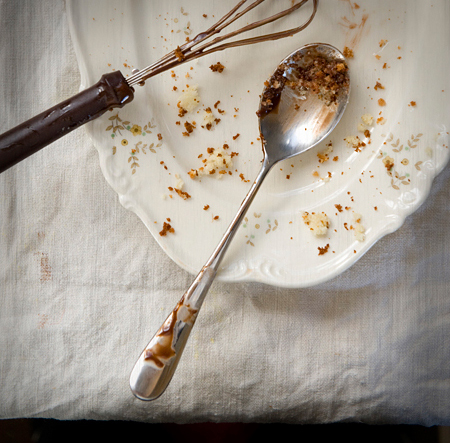Food safety Perspectives by Christine Testa – Regional Food Safety Specialist Lately, during food service operation inspections, I have noticed that food service employees have questions about where and how to store the knives and other utensils.
Many times, I find soiled knives inside sanitizer buckets with soiled sanitizer solution and food particles. Other questions come up such as “Do you really have to clean and sanitize the knife after each?” “Can we use ice water to store coffee spoons? “ What exactly is the rule? According to the 2005 FDA food code, there are 4 acceptable methods to store “in-use” utensils for ready-to-eat food items such as at the sandwich and salad prep stations.
1. Wipe clean with sanitizer and store in a clean and dry location.
2. Keep utensils in a dipper well with a continuous flow of water to flush out particles.
3. Keep utensils in water that is at least 140F.
4. Keep the utensils in the food product during proper cold holding and hot holding, as long as the handles are outside the food container. Ice water is not an approved method of storing in-use utensils because it will not prevent the potential growth of bacteria, unlike hot holding at 140F.
Along with all above rules its also essential to always use fresh food, although Restaurants get Large amount of food to use FIFO method to use that.
Furthermore, using a sanitizer solution is not approved either because there is a potential risk of contamination of food with wet utensils. Here are some simple guidelines to follow: Utensils, cutting boards, and knives must be washed rinsed, and sanitized every 4 hours to prevent cross-contamination. A good time reference is after each meal shift.
For example, after the breakfast shift, all utensils and cutting boards must be sent to the dishwasher or three-compartment sink for proper cleaning and sanitizing to prepare for the lunch shift. After the lunch shift, all items are to be sent back to the dishwasher or three-compartment sink for proper cleaning and sanitizing in preparation for the dinner shift. Not only are the food contact equipment cleaned and sanitized, but I recommend that sanitizer buckets be changed at this time and all equipment cleaned and then wiped down with a sanitizing solution.
When using utensils with raw animal products such as knives, cutting boards, and utensils, they must be washed, rinsed, and sanitized after use to prevent cross-contamination. Furthermore, remember to clean and sanitize the work table as well.
Cleaning must be conducted using a soap and water solution, rinse well with plain water, and then use the sanitizer solution for the final step of sanitization. Cleaning must come first before sanitizing, there is no exception. When using food contact equipment with non-potentially hazardous food items such as ice bins, lemon dishes, and utensils at a bread station, these items can be cleaned and sanitized every 24 hours.
I recommend that at the conclusion of each closing shift that these items are sent to the dishwashing machine or three-compartment sink for cleaning and sanitizing. By following a standard operating procedure for manual ware washing of food contact equipment and surfaces throughout your facility, you can help better ensure that your food preparation areas are maintained clean and sanitary at all times.

